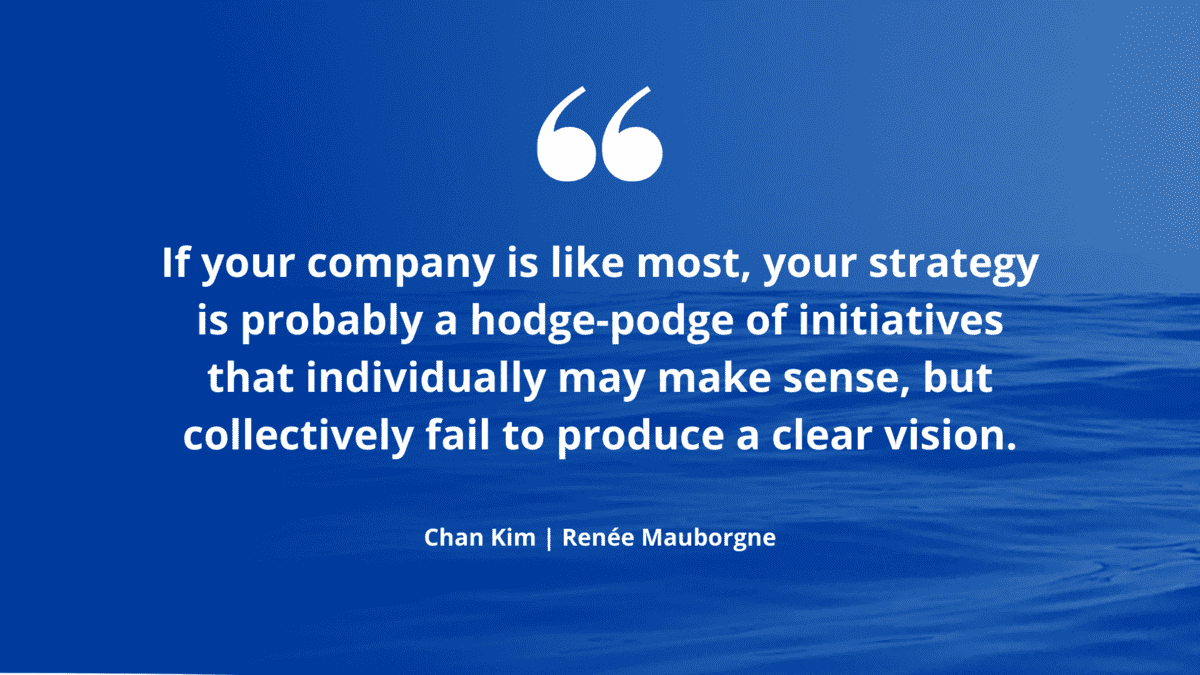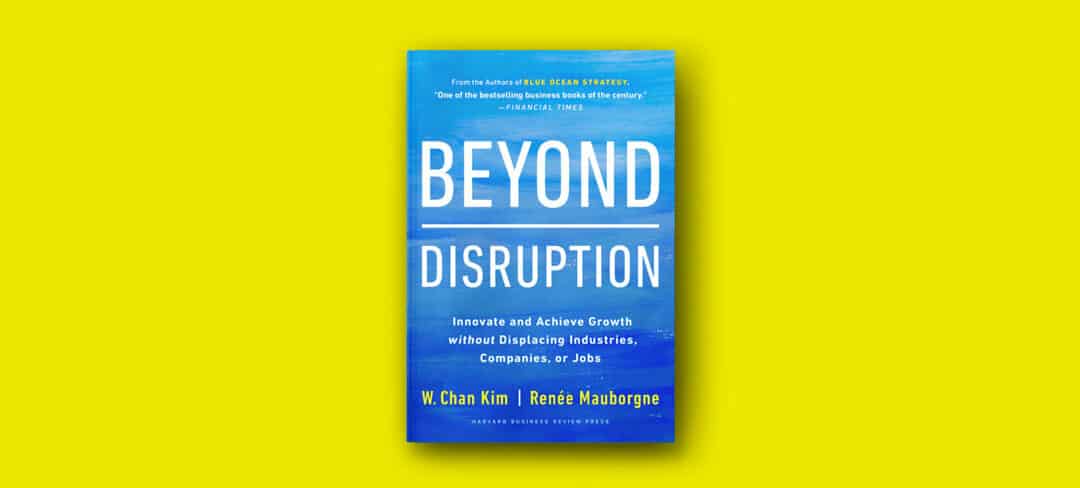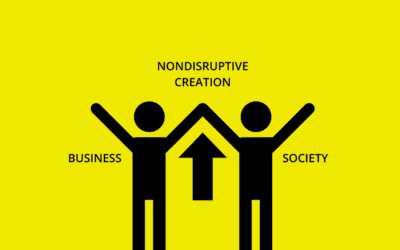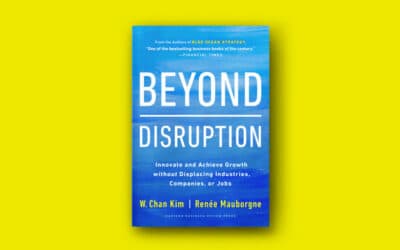‘Strategy’ and ‘tactics’ – we hear people use these terms all the time at work or online, often interchangeably. But there’s a crucial difference between strategy and tactics, and you need to understand both if you’re serious about getting ahead in your business. Let’s take a closer look at these terms and clear up the confusion.
Strategy and tactics have their roots in ancient military strategy. The historical foundation of business strategy can be traced back to warfare, where territory is defined and limited and opponents compete to protect and enlarge their share of limited and existing terrain.
To gain advantage, the focus was always on beating the competition in the existing ‘market space’. Not surprisingly, the concepts of strategy and tactics have penetrated corporate thinking ever since. To this day, we still use “chief executive officer” to describe the highest-ranking person in an organization, where the word ‘officer’ is borrowed from military terminology.
Against this military background, competition-based strategies emerged as central to corporate thinking. For most companies and organizations, competition is the critical variable in determining the success or failure of business, and strategy and tactics are developed and implemented with this competition in mind.

“Chief Executive Officer” still describes the highest-ranking person in an organization.
What is the difference between strategy and tactics?
What is strategy
Strategy is the overarching plan or approach to achieving a set goal or outcome that an organization is working towards. It sets the tone for all the company’s activities and tactics.
Strategy is the development and alignment of the three propositions: value proposition, profit proposition, and people proposition. For any strategy to be successful and sustainable, an organization must develop an offering that attracts buyers (the value proposition); it must create a business model that enables the company to make money out of its offering (profit proposition); and it must motivate the people working for or with the company to execute the strategy (people proposition).
The three strategy propositions provide a framework to ensure an organization is taking a holistic approach to the formulation and execution of strategy.
What are tactics
Tactics are the specific activities that make the strategic plan work. If you were to compare strategy vs tactics in an organization, more often than not you’ll find that an organization uses any number of tactics but lacks an overall strategy.
You can think of the difference between the strategy and tactics as the strategy being the “what” and tactics being the “how”.
Let’s look at an example of strategy and tactics to help us understand the difference.

Image: Raysonho @ Open Grid Scheduler / Grid Engine – Own work, CC0
Example of a strategy
Consider Home Depot, the company that has revolutionized the do-it-yourself market in North America. Home Depot achieved tremendous growth but its strategy was not to take market share away from other hardware stores. Rather, it created a new market of ‘do-it-yourselfers’ out of ordinary homeowners.
Home Depot’s strategy was to create the best of the hardware store, offer the expertise of professional home contractors and do so at markedly lower prices than hardware stores.
This is the ‘what’, as in what is the vision for the company, what does the organization plan to achieve.
Example of tactics
In the case of Home Depot, an example of tactics to achieve the set strategy included recruiting sales assistants with significant trade experience – often former carpenters or painters – to bolster the competence and confidence of customers whose expertise in home repair is limited. These assistants are trained to walk customers through any project – installing kitchen cabinets, for example, or building a deck.
“If your company is like most, your strategy is probably a hodge-podge of initiatives that individually may make sense, but collectively fail to produce a clear vision.” – Chan Kim & Renée Mauborgne

Consequences of not clearly defining tactics and strategy
Executives are paralyzed by the muddle. Few employees deep down in the company even know what the strategy is. And a closer look reveals that most strategic plans don’t contain a strategy at all but rather a hodgepodge of tactics that individually make sense but collectively don’t add up to a unified, clear direction that sets a company apart – let alone make the competition irrelevant.
Does this sound like the strategic plans in your company?
Why the competition should not occupy the center of your strategic thinking
Is competition driving your strategy? Focusing on competition all too often keeps companies anchored in the ‘red ocean’ – all the industries in existence today; the known market space. This approach puts the competition, not the buyer, at the core of strategy. As a result, a company’s time and attention focus on benchmarking rivals and responding to their strategic moves, rather than understanding how to deliver a leap in value to buyers, which is not the same thing.
Professors of strategy and world-renowned management thinkers, Chan Kim and Renée Mauborgne, point to a different approach. Their research shows that companies that break away from the competition pay little heed to matching or beating rivals or carving out a favorable competitive position. The aim of these organizations is not to outperform competitors. It’s to offer a quantum leap in value that makes the competition irrelevant and creates blue oceans – the uncontested market spaces where demand is created rather than fought over.
Characteristics of a good strategy
To further understand what sets a strategy apart from tactics, let us first introduce you to a blue ocean strategy tool for building a compelling blue ocean strategy, the Strategy Canvas, developed by Chan Kim and Renée Mauborgne in their global bestsellers Blue Ocean Strategy and Blue Ocean Shift.
It captures in one simple picture, the current strategic landscape. A value curve, or strategic profile, is the graphic depiction of a company’s relative performance across the factors of competition in its industry. It shows how your company’s strategy fares against the competition.
AWhen expressed through a value curve, an effective blue ocean strategy has three complementary qualities: focus, divergence, and a compelling tagline.
1. Focus
– a clearly defined strategic profile or value curve helps companies avoid trying to be everything to all consumers
Focus is when a business or product/service offering concentrates on a limited number of key competitive factors. Focus signals that an offering pursues low cost by not diluting a company’s resources in unnecessary investments. It suggests that a new strategy has a holistic strategic focus, instead of being a conglomerate of independent tactics. Limiting the number of key competitive factors also makes the strategy easier to communicate and execute.
2. Divergence
– breaking away from the industry’s standard value curve to stand apart from the competition
Divergence refers to the difference between a company’s strategic profile and that of its competitors’. Specifically, it refers to the divergence between the key competitive factors and level of investment in these factors of a company’s offering relative to its rivals’ as visualized on the strategy canvas. In red oceans, companies’ strategies tend to converge; they tend to focus on the same key competitive factors with marginal differences in price and offering level across these competing factors. A company practicing blue ocean strategy, in contrast, reconstructs market boundaries to create a divergent offering from the competition.
3. Compelling tagline
– delivering a clear, truthful message that accurately reflects your strategic profile is a good way to test for a truly effective strategy
A Tagline is a phrase that captures the essence of the “to be” strategy in a way that speaks forcefully to both a company’s employees and the target mass of buyers. A blue ocean strategy has a clear-cut and compelling tagline. A compelling tagline ensures that the strategy makes sense. It helps customers identify immediately what is offered, and it helps employees identify what they should concentrate on, thereby, bringing focus to the execution of the strategy.
Without these qualities, your company’s strategy will likely be muddled, undifferentiated and hard to communicate, with a high-cost structure.
It will always be important to swim successfully in the red ocean by out-competing rivals. But Chan Kim and Renée Mauborgne argue that in order to sustain high growth, companies need to go beyond competing and create blue oceans of uncontested market spaces where no competition exists.
To ensure that your company has a strategy and not a random set of tactics, you need to align the three strategy propositions: value, profit, and people. Thinking tactically, not strategically, will not get you and your company to the goal you set to achieve.
If you’re interested to read more about aligning value, profit, and people propositions to ensure a sustainable and successful strategy, check out how one organization created a sustainable blue ocean by aligning the three strategy propositions.
Check out these five powerful strategy canvas examples to understand how these companies pursued a cohesive strategy not just a set of tactics. And if you’re ready to draw a strategy canvas for your company, we have developed a step-by-step tutorial and a downloadable strategy canvas template.
To learn how to start thinking strategically, check out our online course, the Blue Ocean Sprint, which will teach you six different ways of creating a blue ocean.



















